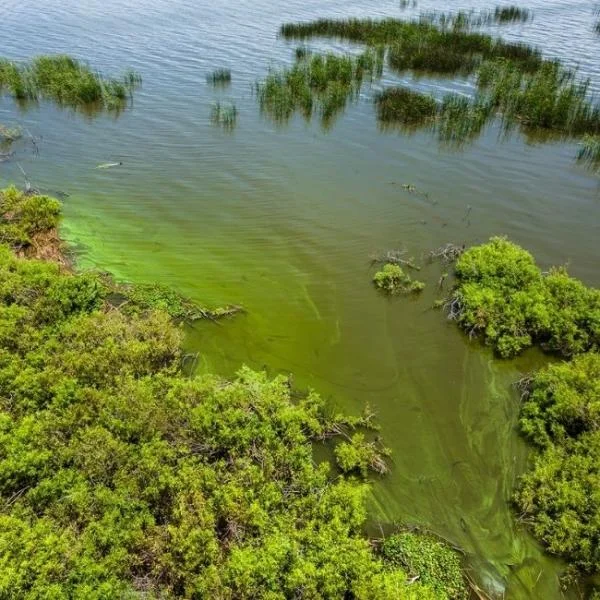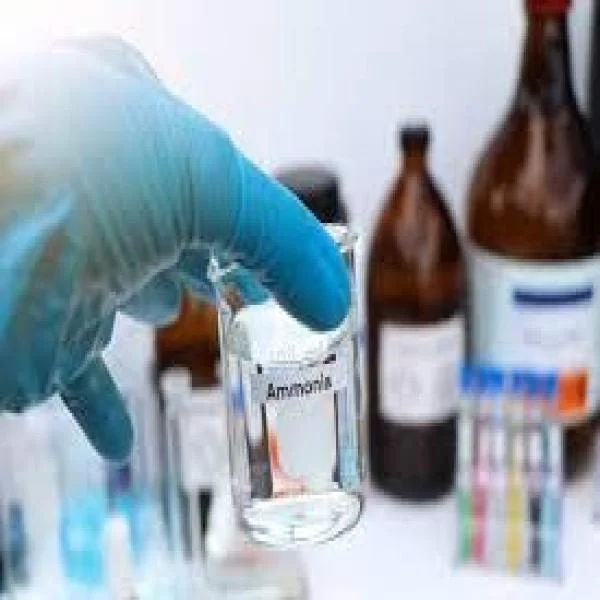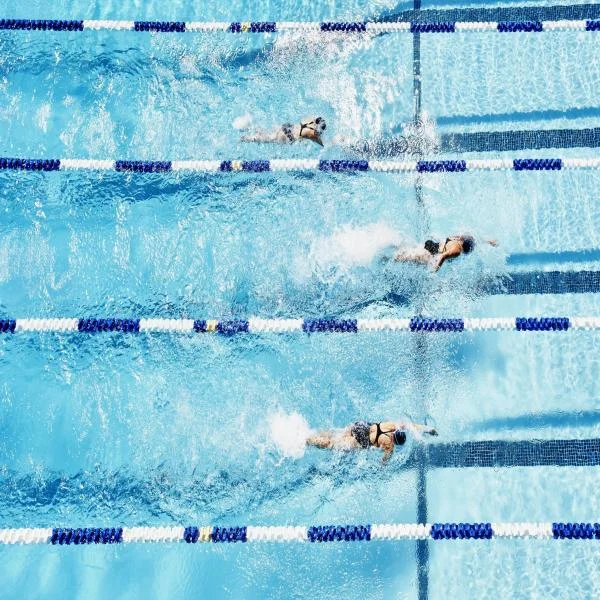
Maintaining a healthy pond is crucial for the well-being of fish and other aquatic life, and one of the biggest threats to pond health is ammonia buildup. Ammonia is a toxic compound that forms naturally in ponds, often through organic waste, decaying plant material, and fish excretions. High ammonia levels can lead to poor water quality, posing serious risks to fish health and potentially leading to fish death. This article offers practical tips on identifying ammonia in pond issues, preventing buildup, and keeping ammonia levels safe to maintain a balanced and healthy pond environment.
Understanding Ammonia and Its Impact on Pond Health
Ammonia (NH3) is a colorless gas that dissolves easily in water, often forming in ponds due to natural processes. Fish excrete ammonia as a byproduct of protein metabolism, and it also accumulates from the breakdown of organic matter, such as dead leaves, uneaten fish food, and decaying plants. In a well-balanced pond, ammonia is usually broken down into less harmful substances through biological filtration. However, excessive ammonia buildup is toxic and can cause various health problems for fish, including stress, respiratory issues, and, in severe cases, death.
Common Causes of Ammonia Buildup in Ponds
There are several common sources of ammonia in pond environments:
- Fish Waste: Fish produce ammonia as part of their natural biological processes. Overcrowding or overfeeding can increase waste and lead to high ammonia levels.
- Decomposing Organic Material: Dead leaves, plants, and uneaten food can decay in the pond, releasing ammonia in the process.
- Poor Filtration: An inadequate or poorly maintained filtration system cannot effectively process ammonia, allowing it to build up in the water.
- Overfeeding: Excess food that isn’t eaten by fish can sink to the bottom, where it decomposes and contributes to ammonia levels.
Knowing the causes of ammonia accumulation can help pond owners implement measures to control and prevent it.
Testing for Ammonia in Pond Water
Regular testing is essential to monitor ammonia levels and ensure a healthy pond environment:
- Ammonia Test Kits: These kits are widely available and easy to use, allowing pond owners to test ammonia levels regularly.
- Recommended Frequency: Testing once a week is ideal, especially in warmer months when biological activity is higher. It’s also essential to test after adding new fish or plants.
- Safe Ammonia Levels: Ammonia should ideally be undetectable in a pond, but levels of 0.1-0.2 ppm are manageable. Anything above this requires immediate attention.
Monitoring ammonia regularly allows you to catch problems early, ensuring fish remain safe from toxic levels.
Tips for Reducing Ammonia in Pond Water
If ammonia levels are high, several effective strategies can reduce and control them:
Perform Partial Water Changes
Water changes help dilute ammonia and restore balance:
- Remove 10-20% of Water: This should be done regularly, especially when ammonia is detected. Use dechlorinated or treated water to avoid introducing harmful chemicals.
- Frequency: During peak seasons, perform a partial water change every two weeks or as needed.
Use Beneficial Bacteria
Beneficial bacteria convert ammonia into less harmful compounds through the nitrogen cycle:
- Add Bacterial Supplements: Products with nitrifying bacteria can boost the bacteria count in the pond, helping to process ammonia more efficiently.
- Ensure Proper Filter Colonization: Bacteria need a place to grow, so ensure your filter media supports bacterial colonization.
Improve Filtration
A strong filtration system is essential for breaking down ammonia:
- Mechanical and Biological Filtration: Mechanical filtration removes solid waste, while biological filtration hosts beneficial bacteria that convert ammonia.
- Routine Maintenance: Clean filters regularly to remove debris without disturbing the beneficial bacteria that process ammonia.
Reduce Feeding
Overfeeding is a major contributor to ammonia problems in ponds:
- Feed Moderately: Only provide enough food for fish to consume within a few minutes. Uneaten food should be removed.
- Choose High-Quality Fish Food: Higher-quality food produces less waste, helping to keep ammonia levels down.
Natural Solutions for Ammonia Reduction
Certain natural methods can help reduce ammonia and support a balanced ecosystem in the pond.
Add Aquatic Plants
Aquatic plants absorb ammonia and nitrates as part of their growth process:
- Floating Plants: Plants like duckweed, water lettuce, and water hyacinth are excellent at absorbing ammonia.
- Rooted Plants: Marginal plants and submerged plants can also help reduce nutrient levels in the pond.
Introduce Activated Carbon
Activated carbon is effective at absorbing ammonia and other contaminants:
- Place in Filter: Activated carbon can be placed in the filtration system to remove ammonia and other pollutants from the water.
- Replace Regularly: Activated carbon needs to be replaced every few weeks for optimal effectiveness.
Preventative Measures to Keep Ammonia Levels Low
Consistent maintenance and a balanced pond environment are essential for long-term ammonia control.
Regular Skimming and Debris Removal
Debris can decompose and increase ammonia levels over time:
- Use a Pond Skimmer: Skim leaves, twigs, and other debris from the water’s surface regularly.
- Prune Dead or Decaying Plants: Remove dead plant matter to prevent decay and ammonia formation.
Avoid Overcrowding the Pond
An overcrowded pond places stress on filtration systems and can lead to high ammonia levels:
- Follow Stocking Guidelines: Only add fish and plants according to the pond’s size and filtration capacity.
- Quarantine New Fish: Isolate new fish to ensure they’re healthy before adding them tothe pond.
Control Algae Growth
Excessive algae growth can disrupt the balance of the pond and contribute to ammonia issues:
- Shade and Limit Sunlight: Adding floating plants can help reduce sunlight, which limits algae growth.
- Use Algaecides Cautiously: Only use algaecides when necessary, as they can kill beneficial bacteria along with algae.
Signs of Ammonia Poisoning in Fish
Fish often exhibit symptoms when ammonia levels are too high:
- Gasping at the Surface: High ammonia levels reduce oxygen in the water, causing fish to gasp at the surface.
- Red or Inflamed Gills: Ammonia irritation can cause redness or swelling around the gills.
- Lethargy or Erratic Swimming: Fish may become less active or swim erratically when exposed to high ammonia.
If fish show these signs, it’s crucial to test the water immediately and take action to reduce ammonia levels.
The Role of the Nitrogen Cycle in Managing Ammonia
The nitrogen cycle is nature’s way of balancing ammonia in aquatic environments. Understanding this cycle can help pond owners manage ammonia levels effectively:
- Ammonia to Nitrite Conversion: Beneficial bacteria first convert ammonia into nitrites.
- Nitrite to Nitrate Conversion: Another set of bacteria converts nitrites into nitrates, which are less toxic and can be used by plants.
- Encouraging the Nitrogen Cycle: Establishing a stable bacterial population in the pond filter is key to maintaining a balanced nitrogen cycle.
Allowing time for the nitrogen cycle to stabilize, especially in new ponds, is essential for preventing ammonia spikes.
When to Seek Professional Help
While regular maintenance can typically control ammonia levels, there are times when professional assistance may be necessary:
- Persistent Ammonia Levels: If ammonia remains high despite efforts to control it, a professional pond service can assess the pond setup.
- Complex Filtration Issues: Experts can evaluate and upgrade filtration systems to ensure they’re adequate for the pond size and fish load.
Seeking help when needed can save time and keep fish healthier in the long run.
Conclusion
Ammonia is a common challenge in pond maintenance, but with regular testing, a few strategic changes, and consistent care, you can keep ammonia levels low and ensure a healthy, thriving pond environment. By implementing proper filtration, using natural solutions like plants, and following a few best practices, pond owners can create a balanced ecosystem that supports the well-being of fish and aquatic life. Taking preventive steps now will help avoid costly repairs and stressful situations, allowing you to enjoy a beautiful, healthy pond year-round.
Related Articles
How Do Algae and Fungi Differ From Each Other?
Algae and fungi are fascinating organisms that play crucial roles in our ecosystem, yet they possess ...
What is Fungi? Exploring the Decomposers in Nature
Fungi represent a fascinating kingdom of organisms that includes approximately 144,000 known ...
Why are Algae Blooms Bad? The Impact of Algae on Environment
Algae blooms represent one of the most significant challenges facing our aquatic ecosystems today. ...
How to Detect and Remove Ammonia in Water Sources
Ammonia, a naturally occurring compound of nitrogen and hydrogen, can be found in various water ...
Ammonia in Pool Water: Common Causes and Effective Solutions
Ammonia in pool water can be a surprising challenge for pool owners, leading to various water ...
What High Levels of Ammonia in the Blood Mean for Health
Ammonia is a naturally occurring substance in the body that is vital to certain metabolic processes. ...






